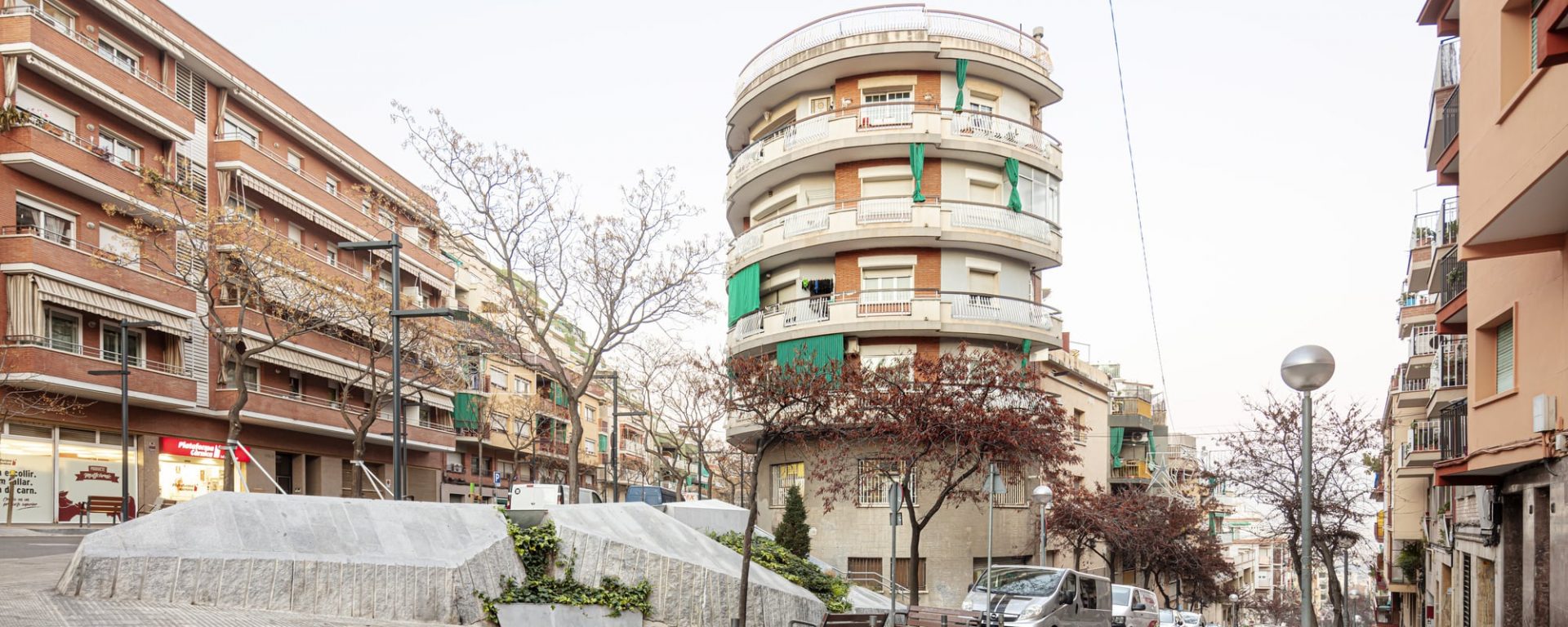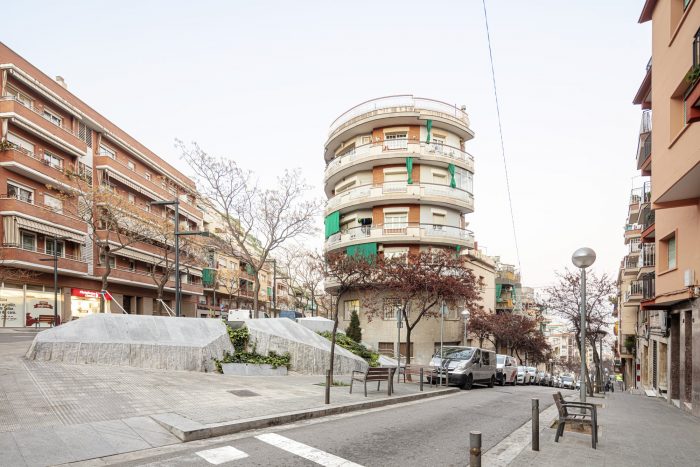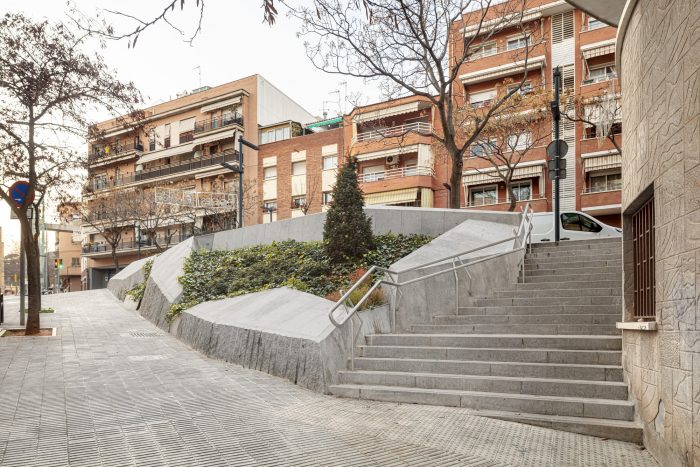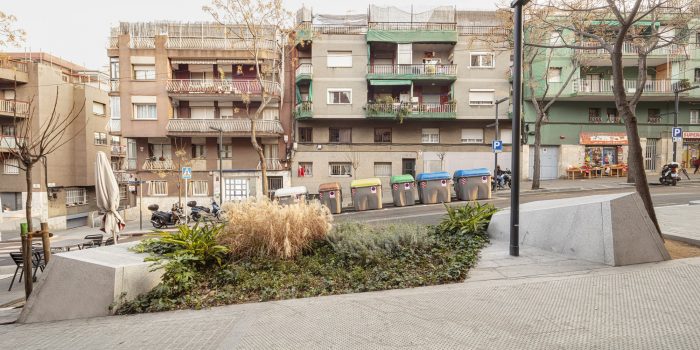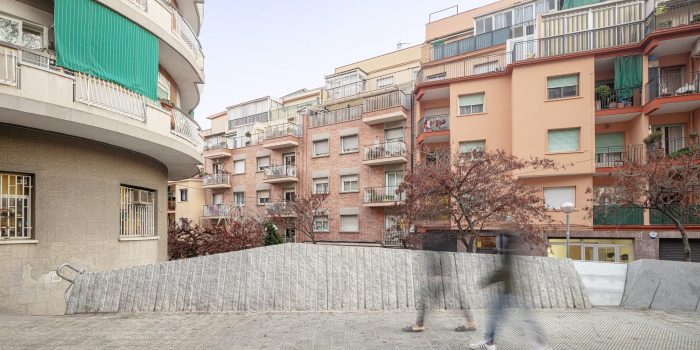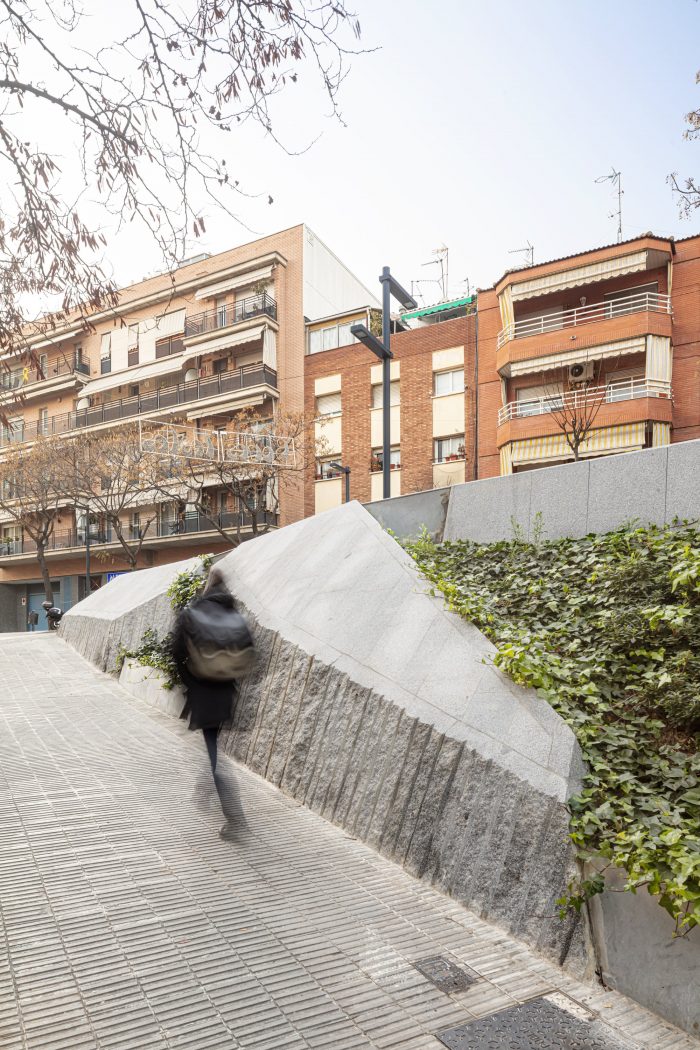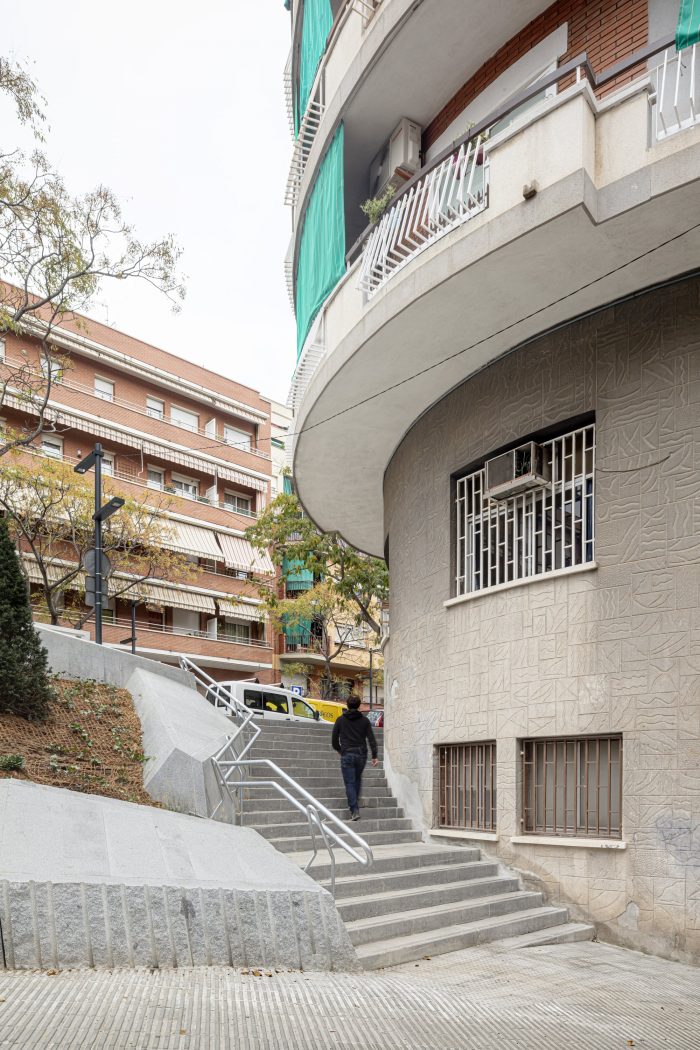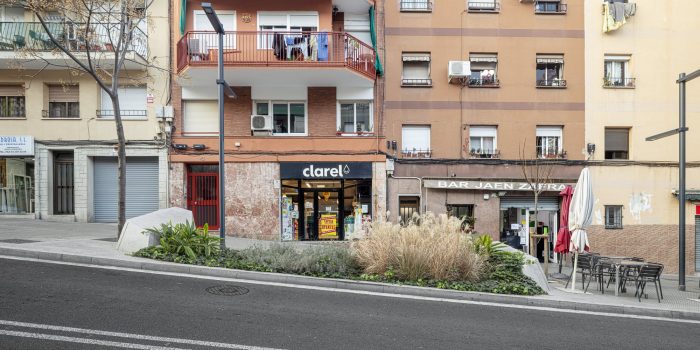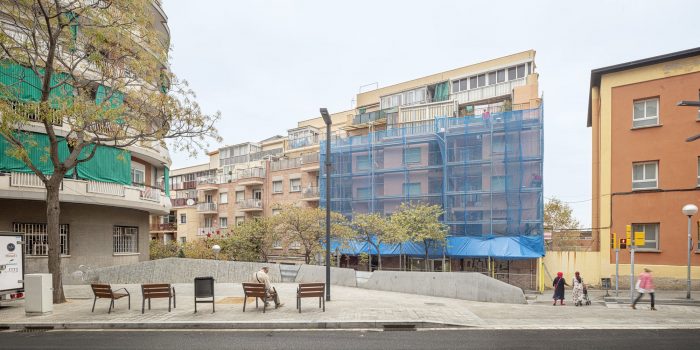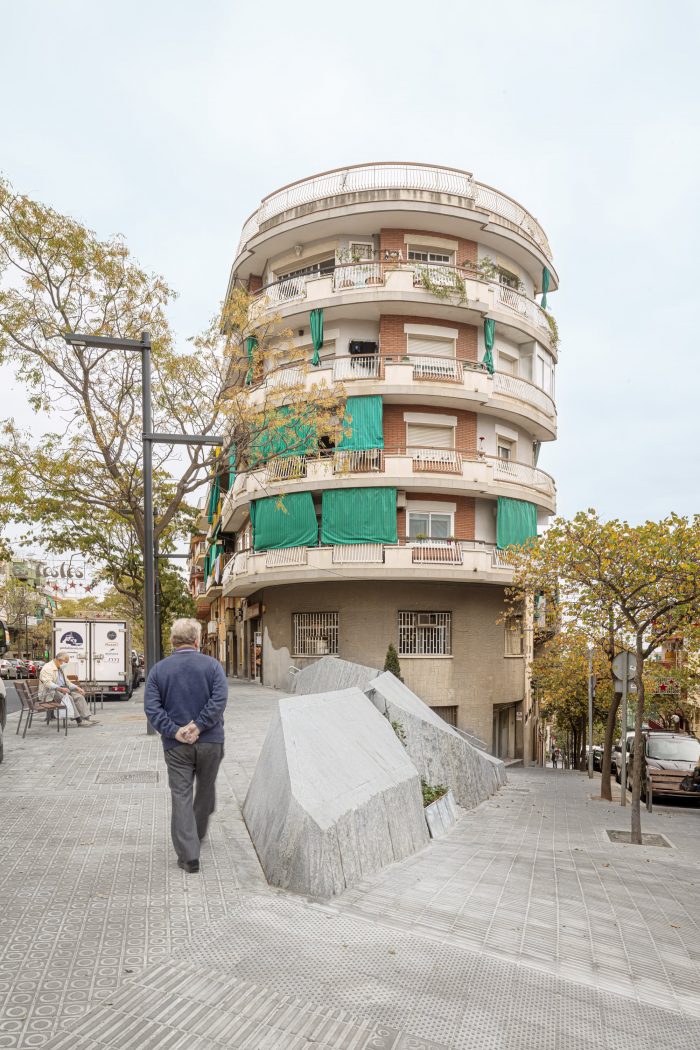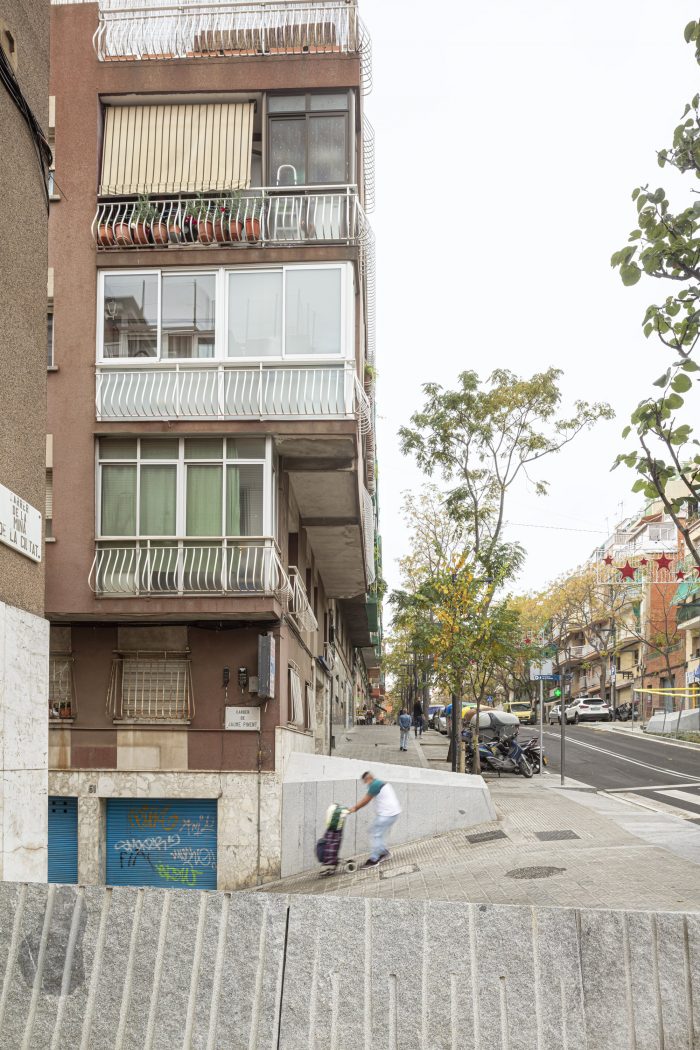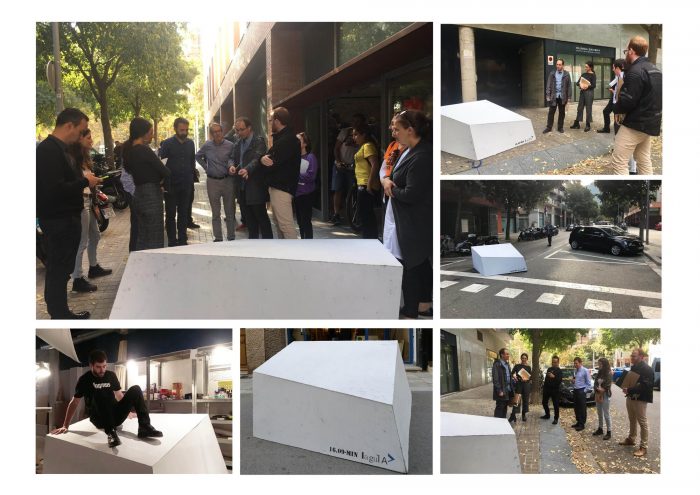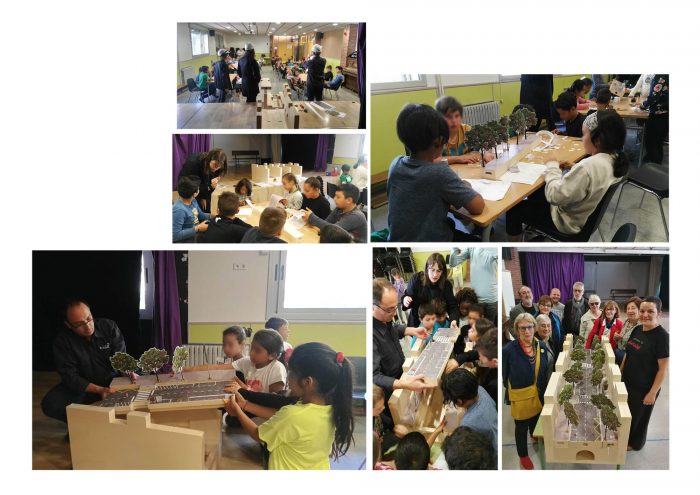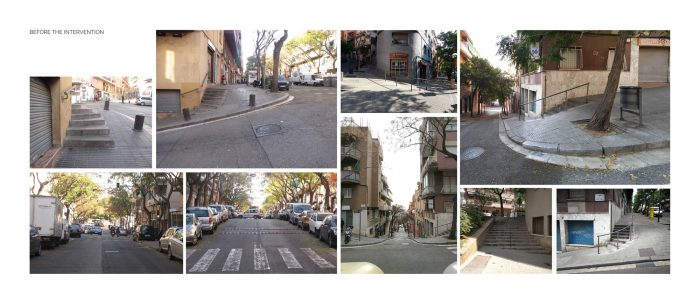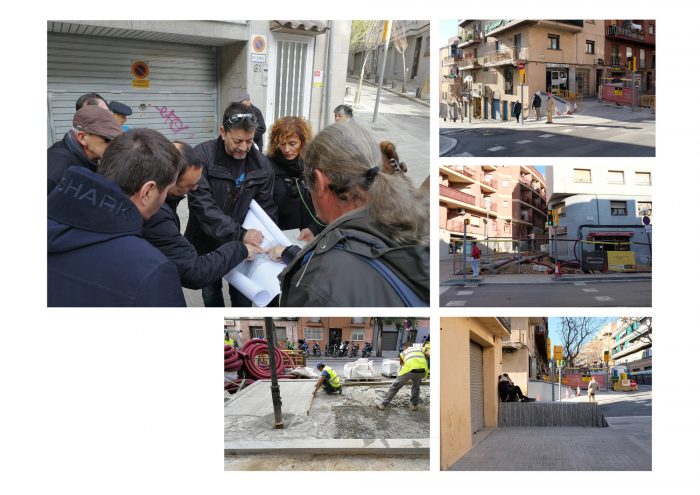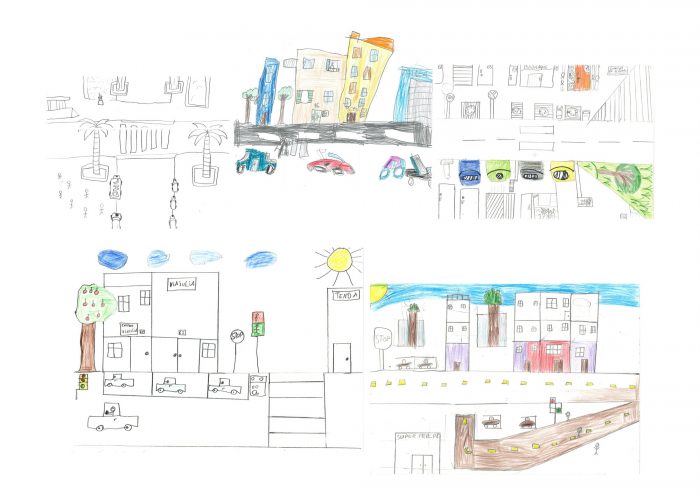Roquetes是一个具有周边位置特征的社区。它已经爬上了Collserola山脉,俯瞰着下面的巴塞罗那平原。地形和提供基本服务的困难,如污水处理或公共交通,形成了它的邻居们的联盟,他们为自己的权利而斗争,从独裁时期的发展主义到民主的最初几年,一直在进行。
Roquetes is a neighborhood with a character marked by its peripheral location. Already climbing the Collserola mountain range, it contemplates the Barcelona plain below. The topography and the difficulty in providing primary services, such as sewerage or public transport, forged the union of its neighbors, whose fight for their rights kept going from the developmentalism in the dictatorship and the first years of democracy.
这个地方和它的当地人的这种奇特的性格,几乎是令人惊讶的,与岩石的底土是一致的,然后它来到了表面,在附近的一些地方形成了采石场。工人的斗争使社区习惯于参与城市发展的需要。在它的记忆中,那些致力于一些街道城市化的周日,与巴塞罗那的佛朗哥政府无关。即使在今天,我们注意到城市规划出现在参与性进程或公民协会的参与中。
That singular character of the place and its locals, almost surly, is consistent with the rocky subsoil, then it comes to the surface shaped as quarries in some parts of the neighborhood. The workers’ struggle has accustomed the community to the need to get involved in urban development. In its memory remain those Sundays dedicated to the urbanization of some streets that were irrelevant to the Francoist administration of Barcelona. Even today, we notice urban planning emerging from participatory processes or the involvement of citizen associations.
这是一个不可复制的人口,习惯于通过坡度为20%的陡峭街道进入其社区。在Roquetes的主要街道Carrer Mina de la Ciutat和Carrer de las Torres、Jaume Pinent或Pla de Fornells的垂直斜坡之间的交叉点,是提案的结晶,其形状为岩石的多面体,参考了旧采石场的几何形状。
It is an irreducible population, accustomed to accessing its neighborhood through steep streets with slopes of 20%. At the intersection points between the main street of Roquetes, Carrer Mina de la Ciutat, and the perpendicular slopes of Carrer de las Torres, Jaume Pinent, or Pla de Fornells, is where the proposal crystallizes in the shape of rocky polyhedrons that refer to the geometries of the old quarries.
这些在花岗岩上切割的结构延长了路线,平滑了斜坡,并改善了这些不可能的街道的可及性,这将需要登山者而不是退休者。Mina de la Ciutat街四百米的重建工作围绕着这半打角落进行,并在其他地方传播它的解决方案,以包围景观区,软化石头,用绿色筛选它。
These structures cut in granite lengthen routes, smooth slopes and improve the accessibility of these impossible streets, which would require climbers and not retirees. The redevelopment of the four hundred meters of Mina de la Ciutat street turns around those half dozen corners, and the dissemination of its solution in other points to enclose landscaped areas that soften the stone and sift it with green.
在许多地方,这些数字成为石质的奇异物,成为市政当局所要求的有序和精确的城市化的特征。巴塞罗那几十年来一直在这个领域处于领先地位:用粉笔线画出的花岗岩路缘石,标准化的建筑细节和街道设施的元素,以及特定但广泛的20×20厘米的铺装件,巴塞罗那的panot卓越。
At many points, these figures become stony singularities that characterize the orderly and precise urbanization required by the municipal authority. The street becomes functionality, and Barcelona has been leading that field for decades: granite curbs drawn with chalk lines, standardization of construction details and elements for street furniture, and a specific but wide range of 20x20cm paving pieces, the Barcelona panot par excellence.
这个集合体的尺寸都是一样的,但其表面图画不同,以排出雨水和避免打滑,代表了建筑师对邻居们的最后一次点头,这些邻居们在六年的项目和工作中都参与得很投入:”我们将使用所有放置在巴塞罗那的panot模型。所有的?是的,所有的”。今天存在的邻里多样性,来自不同时代和起源的移民,他们的语言和信仰是多元的,但都是Roquetes的居民,在鲜花、圆圈或方形水泥片的混合体中得到体现。它们是各种各样的图画,以花岗岩瓷砖为框架,铺设在街道上,代表了这个社区的综合状况,并且不可避免地产生一些讽刺性的反应。你确定这不是整个城市的作品的遗迹吗?
This conglomerate of panots, all the same in dimensions but different in their surface drawings, to drain the rain and avoid skidding, represents the last nod from the architects to the neighbors who have participated so intensely in the six years of project and work: ‘We will use all the panot models that are placed in Barcelona. All? Yes, all’. The neighborhood diversity that exists today, with immigrants from different times and origins, plural in their languages and beliefs, but all residents in Roquetes, is represented in the amalgam of flowers, circles, or square cement tablets. They are assorted drawings, framed in granite tiles that pave the street, represent the conglomerated condition of the neighborhood, and, inevitably, generate some ironic response: ‘Are you sure this isn’t the remains of the works of the entire city?’.
Architects: Lagula Arquitectes
Area : 93388 ft²
Year : 2021
Photographs :Adrià Goula
Manufacturers : Santa & Cole, Marbres Lliçà
Lead Architects : Antonio Alonso Ortega, Martín Ezquerro Fernández, Ignacio López Alonso, Manel Morante Mediavilla, Marc Zaballa Camprubí
Collaborators : Mària Canel, Gemma Arco, Isa Lozano, Rosa Herrero, Antonio García, Inés Alomar, Patrizia Etxebarria, Toni Cladera, Carmen Barberá, Rafa Berengena, Laura Obradó, Jongwook Park, Xavier Font, Aleix Ranera, Jan Carol
Promoter / Property : BIMSA
Contractor : AMSA
Engineering : TDI Enginyers / M7 Enginyers
Technical Architecture : BAC / Tresat
District Technical Services : Serveis Tècnics de Districte
City:Barcelona
Country:Spain

